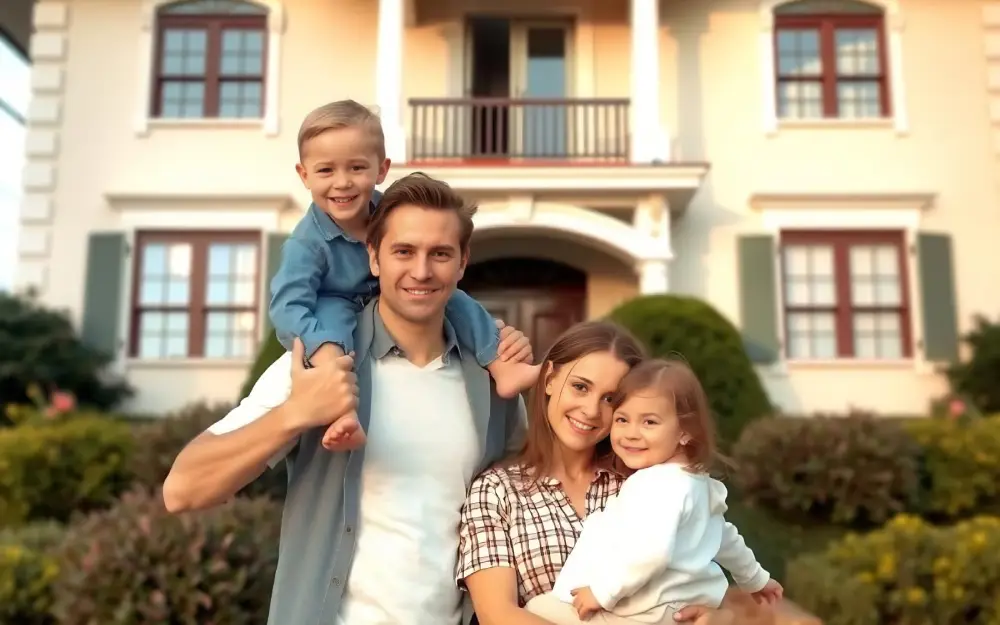
Designing a Safe Home for Families
Designing a safe home for families involves creating an environment that prioritizes the physical, emotional, and mental well-being of everyone in the household. A safe home is not only about security but also promoting comfort, functionality, and peace of mind. Here are some essential considerations when designing a safe and family-friendly home:
1. Safety First: Structural Integrity and Fire Protection
- Durable Materials: Use high-quality, non-toxic materials for walls, flooring, and furniture. For example, opt for lead-free paints, low-VOC finishes, and flame-retardant materials for soft furnishings.
- Fire Safety: Install smoke detectors in key areas such as bedrooms, hallways, and the kitchen. Ensure there are fire extinguishers easily accessible and that exits are clear and well-marked.
- Strong Foundation and Safety Inspections: Ensure the structure is sound and regularly checked for any issues. For homes in areas prone to natural disasters (e.g., floods, earthquakes), reinforce foundations and add storm-resistant features.
2. Child Safety and Accessibility
- Childproofing: Install safety gates at the top and bottom of stairs, secure heavy furniture to walls to prevent tipping, and use outlet covers to prevent electrical accidents. Kitchen cabinets should have childproof locks, and sharp corners on furniture can be softened with bumpers.
- Bathrooms: Prevent scalding by installing temperature-limiting faucets and water heaters. Non-slip rugs or mats in the bathroom will help prevent falls.
- Accessible Design: For multi-generational homes, consider universal design principles to ensure that the home is accessible to everyone, including seniors or those with disabilities. Features like ramps, wider doorways, and bathroom safety bars can be added.
3. Security Measures
- Locks and Alarms: Install sturdy locks on all doors and windows, and consider a security system with cameras, motion sensors, and alarms. Smart home technology can integrate these systems for remote monitoring.
- Well-lit Entryways: Adequate lighting around the exterior of the home helps deter intruders and provides safety when entering or leaving the house at night.
- Fencing and Landscaping: Enclose yards with secure fencing, especially if you have young children or pets. Keep trees and shrubs trimmed to avoid providing cover for intruders.
4. Mental and Emotional Safety
- Private Spaces: Design spaces where family members can retreat and enjoy privacy, such as individual bedrooms, a quiet study, or reading nook. Mental health is as important as physical safety, and having areas for solitude can be essential for overall well-being.
- Outdoor Spaces: Create a backyard or garden area where children can play safely and parents can relax. Fences, soft grass, and age-appropriate play structures add to the safety and enjoyment of outdoor spaces.
- Family Interaction Areas: Design open, welcoming spaces like a living room or kitchen where the family can gather and interact. Centralizing family activity zones fosters emotional closeness and a sense of security.
5. Energy Efficiency and Comfort
- Climate Control: Good insulation, proper ventilation, and energy-efficient windows maintain comfortable temperatures and improve air quality. Consider investing in a heating/cooling system that is easy to regulate to avoid risks like extreme heat or cold.
- Natural Light: Maximize natural light by using large windows and glass doors. Daylight exposure can improve mood, sleep quality, and overall health.
- Sustainable Design: Incorporate eco-friendly materials and energy-saving technologies to reduce environmental impact. Solar panels, energy-efficient appliances, and rainwater harvesting systems promote sustainability and long-term safety for future generations.
6. A Safe and Healthy Environment
- Air Quality: Ensure the home has proper ventilation and an air filtration system to prevent allergens, mold, or toxins from affecting health. Plants can also be used to naturally purify the air.
- Water Safety: If you have a pool or water features in the yard, add safety barriers to prevent accidents. Install water filters to ensure that tap water is clean and safe for consumption.
- Hazard-Free Surfaces: Install flooring that minimizes slipping hazards, such as non-slip tiles or carpeting in high-traffic areas. Additionally, ensure there are no tripping hazards like loose rugs or clutter around the home.
7. Technology for Safety
- Smart Home Features: Smart devices such as cameras, video doorbells, smart locks, and thermostats can make it easier to monitor and control the home environment from anywhere, increasing both convenience and security.
- Emergency Plans and Communication: Designate a space for emergency contacts, medical information, and family evacuation plans. Keeping a clear system in place for emergencies ensures everyone in the household knows how to act in a crisis.
- Home Automation for Daily Tasks: Automatic lighting, voice-controlled systems, and smart appliances help reduce the risk of accidents (e.g., accidentally leaving the stove on) while enhancing convenience.
8. Creating a Family-Centered Layout
- Open Flow: Design the layout to promote smooth traffic flow between common areas (kitchen, living room, dining room) so family members can easily communicate and interact.
- Flexible Spaces: Consider multi-functional spaces that can adapt as your family's needs evolve. A playroom can later be turned into a study or office, and an extra bedroom can serve as a guest room when needed.
- Organization and Storage: Adequate storage helps reduce clutter, making it easier to keep the home safe. Design built-in storage solutions to minimize hazards from loose objects and toys lying around.
Conclusion
Creating a safe home for families is a multifaceted approach, blending physical safety features with emotional well-being, environmental health, and a functional layout. By focusing on childproofing, security, accessibility, comfort, and sustainability, a family-friendly home can provide a nurturing and secure environment for everyone. Each home is unique, so prioritize the specific needs of your family while keeping safety and design in mind for long-term peace of mind.
